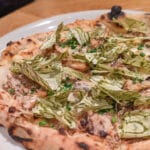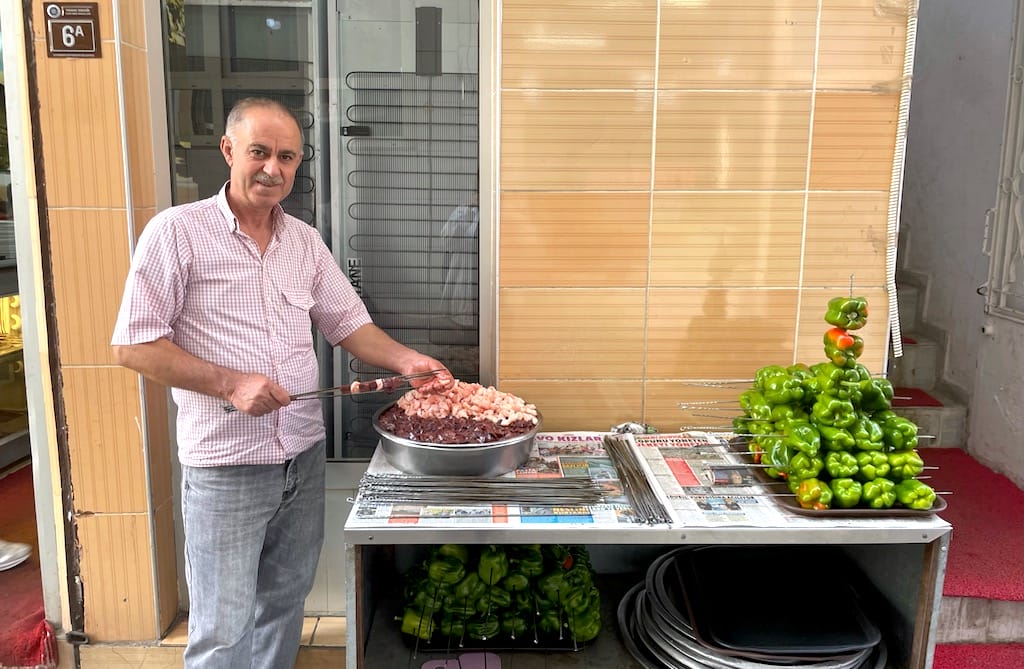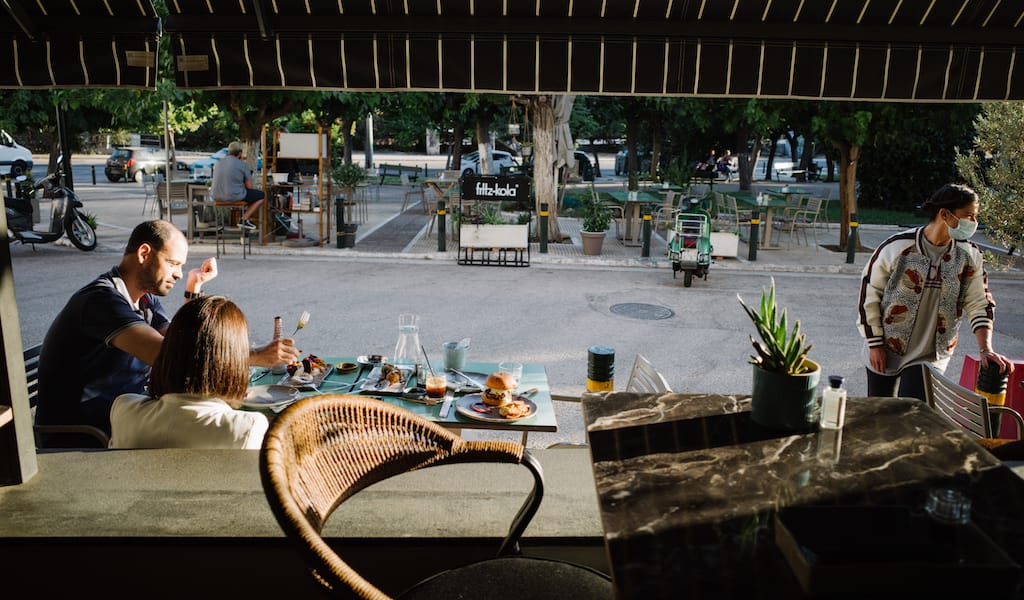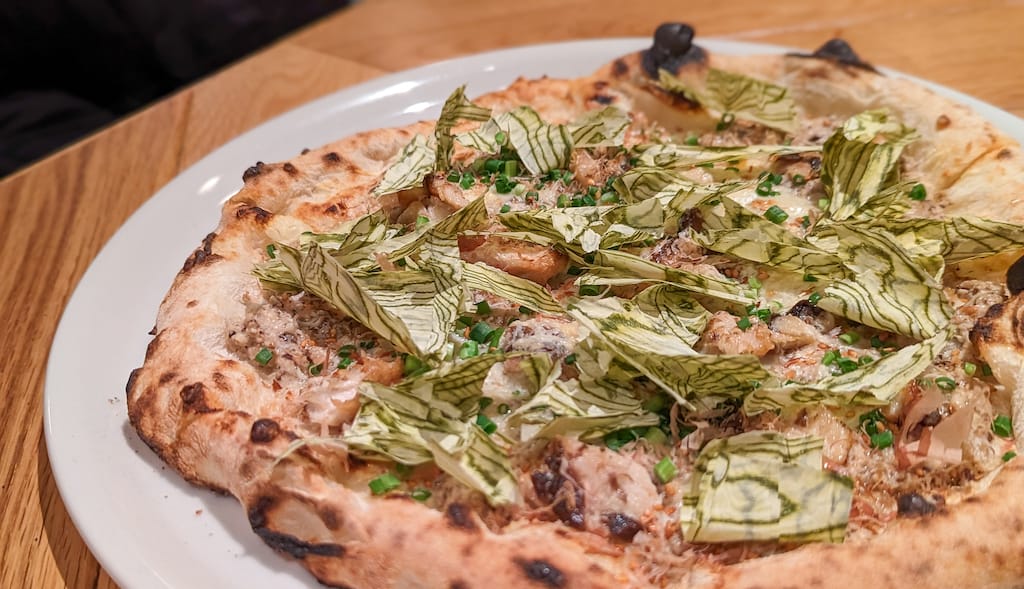Editor’s note: We regret to report that La Cuina del Guinardó has closed.
Up in the high streets of the Horta-Guinardó hills, not far from the old historic building of L’Hospital de La Santa Creu i Sant Pau, there is a restaurant with a big concentration of culinary talent but just eight tables. To make things worse, they are only available during two hours for lunch. Fortunately for those who can’t snag one of those precious tables, La Cuina del Guinardó (“Guinardo’s Kitchen”), a Catalan traditional market-cuisine restaurant, is also a store selling cooked food to take away from morning to evening and a great wine shop, with a tasting area in the upper level.
This “kitchen,” which opened in 1994, is run by Santi Velasco – a chef with 40 years of experience in three restaurants under his belt – along with his wife and their daughter, Montse Velasco, a sommelier who won the “Nariz de Oro” in 2011. The award, which means “Golden Nose,” had its last edition in 2015 and, for more than 20 years, was one of the best national contests for Spanish sommeliers.
The whole family makes a great team, working in careful orchestration. Santi leads the kitchen, with his wife helping out, and Montse naturally takes care of the wines, using her knowledge both to recommend bottles in the shop and to create great food-wine pairings for guests at the restaurant. Montse, who grew up amidst kitchens and restaurant tables, also manages the upstairs tasting room/restaurant; however, Santi frequently emerges from the kitchen to say hello and talk a bit with guests.
Downstairs, on the ground floor, the shop is in a small corner, with one wall covered with bottles (they have more than 200 wines) and other products; in front, the glass-covered food counter displays the daily dishes to take away. The activity begins early and the food starts to come out around 10 a.m. The glass counter offers a variety of traditional dishes based entirely on seasonal Catalan recipes and carefully prepared with high-quality ingredients and their delicious family touch: Santi Velasco often loves to cook with a bit of wine. Oxtail, rabbit stew and even seafood stew or other recipes might have a touch of some mellow wine, sherry or even vermut as a flavorful complement.
In Barcelona there is a great tradition of home-cooked takeaway dishes, stemming from the industrial culture of the 20th century. For many decades, men and women who worked in factories and commerce had very little time to eat at home or prepare food for their family. The solution for many were the numerous takeaway market stalls and small shops that opened in their neighborhoods, offering the same homey dishes they could make at home, but ready to warm up and eat: cooked legumes, cured cod and many other recipes. 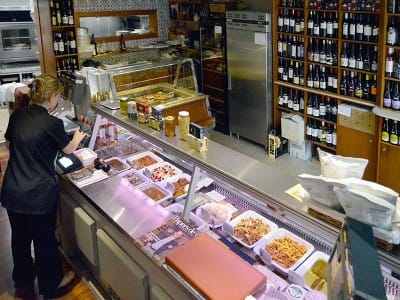 These establishments became very popular in the last century and nowadays are still a robust fixture in the city, having kept their original homey-traditional cooking style but adapted to modern life.
These establishments became very popular in the last century and nowadays are still a robust fixture in the city, having kept their original homey-traditional cooking style but adapted to modern life.
However, it’s not so easy to find places with truly high-quality ingredients and more select preparations. At La Cuina del Guinardó all the fish is wild and both the fresh and the preserved ingredients are top-notch, from the bread (by Daniel Jordà, a third-generation, artisanal baker who supplies bread to several Michelin-starred restaurants) to the excellent Pota Blava “blue leg” chicken from El Prat, with a PGI (Protected Geographical Indication), and the “green vegetable caviar,” the exquisite and delicate guisantes lágrima (“tear-shaped peas”), available only in spring.
All the cooked dishes to take away can be tasted at the tables, but for the dining room there is also a specific menu of dishes that wouldn’t survive the trip home, such as baked fish. The seasons drive the selection of ingredients, which they develop with different preparations. In winter, the spoon is the queen of the table, for dishes such as the emblematic callos (tripe stew with spices), or the pig’s feet with chickpeas (they have kept the same supplier for decades), with the addition of a bit of shredded black butifarra (a Catalan sausage) to give more flavor, cooked for a very long time until the meat detaches super-easily from the bones. Another standout dish is the slow-cooked oxtail with red wine and chocolate – intense and rich, ready to change your day!
We also love the delicious simplicity and local personality of the fesolets d’ull negre, a kind of black-eyed pea with caramelized onion and some beautiful 00-size anchovies (large cured anchovies preserved in olive oil) to take away. Always a pleasure is the monkfish with prawns, enhanced by a sauce made with seafood fumet (“suquet” in Catalan) made with rockfish, crab and mantis shrimp that fill the mouth with flavor. Tasty but lighter, perhaps ideal as a starter, are great piquillo red peppers stuffed with tuna and Basque chili vinaigrette, with the combination of two different olive oils and a Pedro Ximénez wine reduction.
When it comes to the wines, Montse recommends some of the most interesting new Catalan wines from the Empordà DO (Denomination of Origin), the most emblematic Montsants or one of the best Priorats, like Dofí from Alvaro Palacios or Mas Doix. The upstairs tasting room is a great spot to try out some of Montse’s favorite wines and her latest discoveries. There’s just one catch – it’s only open only at lunchtime.
Published on February 02, 2016
Related stories
November 8, 2022
Istanbul | By Erin O’Brien
IstanbulIf there is one thing that we learned throughout our time in Diyarbakir, it is that everyone here has their favorite liver place. We traveled to this southeastern Turkish city in the hopes of discovering the “best liver,” the best example of the ancient city’s delicacy, but upon arrival realized just how insurmountable a task…
October 5, 2021
AthensBefore we start this story, we must first explain the role of the platia in Greece. Platia (πλατεία, pronounced pla-tee-ah and sometimes spelled plateia) means “plaza” in Greek, and can refer to a central town square or a small neighborhood square. All ages meet at the platia: babies in strollers, loud children running and playing…
March 23, 2023
TokyoEvery day, Yuki Motokura records the temperature and the humidity, and checks in on his pizza dough. He adjusts the flour, water and salt in minute increments, and logs the results with precision. “Even if the data is the same, it might not come out the same,” Motokura says. “Pizza is just that difficult.” While…











































